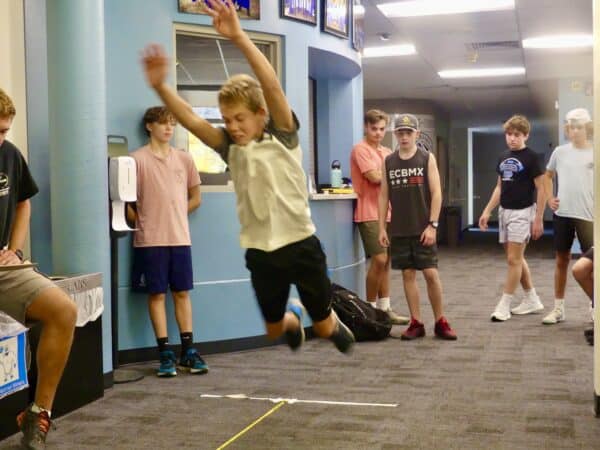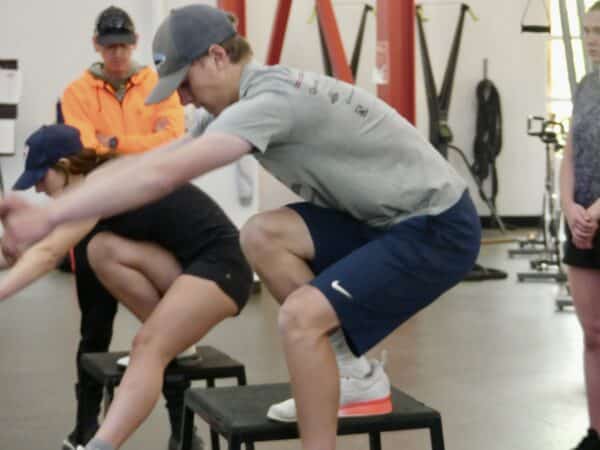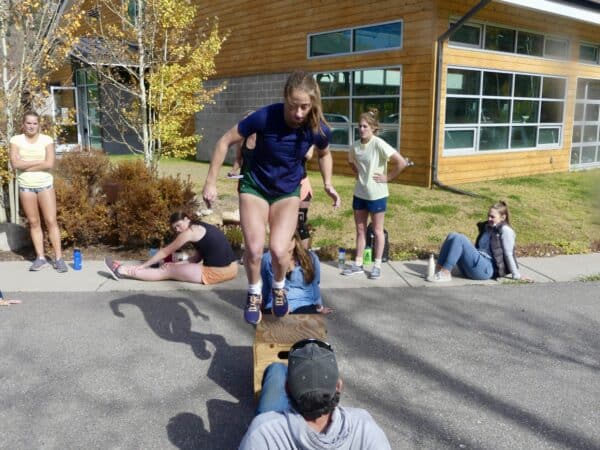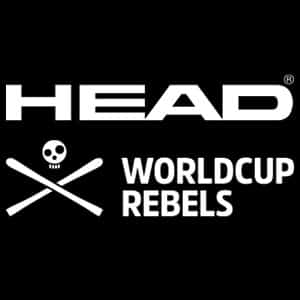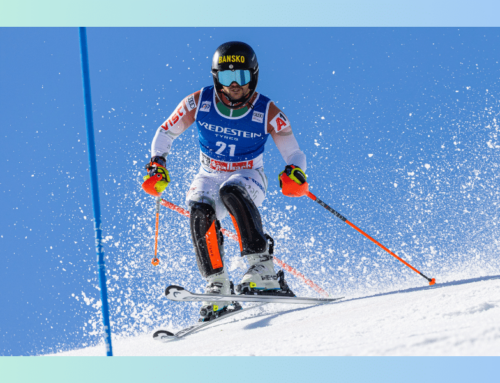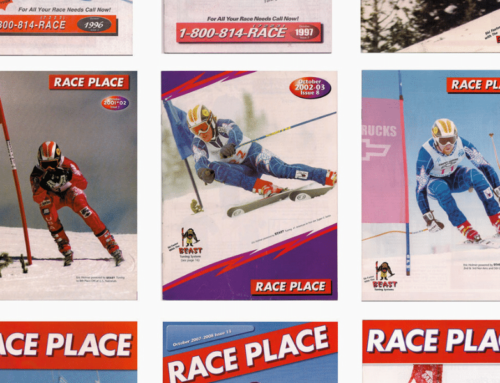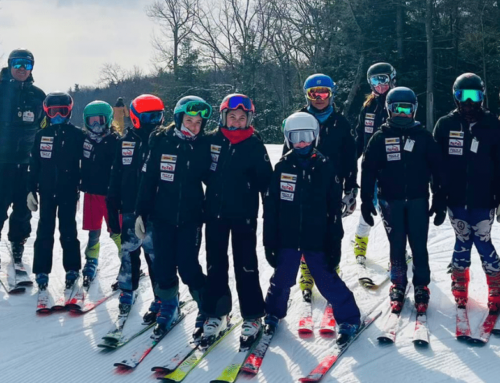Early Sport Specialization Versus Diversification in Youth Athletes
Photo credit: Peter Lange
Republished with consent from the National Strength and Conditioning Association
The purpose of this article is to discuss the different opinions regarding the validity of early sport specialization as opposed to diversification, specifically the effect these two methods have on injuries, motor development, skill acquisition, and social and psychological aspects.
Over the last 30 years, the landscape of adolescent athletics has changed drastically. Adolescents who participate in sports activities may find them enjoyable while reaping the many potential benefits they can offer. Sport activities promote self-esteem, leadership, and relationships among fellow teammates (4). However, the level of competitiveness in youth sports is on the rise, causing more competitive events at younger ages, specific training, and sport specification (4). Seasons are longer and parents are encouraged to sign their children up for organized club sports that practice and compete year-round. In the United States, youth participation in sports has increased from approximately 18 million in 1987 to 60 million in 2008 (5).
Although more children are playing sports, it appears that multisport athletes are becoming a thing of the past (7). This raises the question: is early sport specialization or sport diversification the best way to develop youth athletes? Early sport specialization can be defined as “intense year-round training in a specific sport with the exclusion of other sports at a young age” (5). On the other hand, sports diversification is the “participation in a variety of sports and activities through which an athlete develops multilateral physical, social, and psychological skills” (10).
As the money in college and professional sports has increased, the desire to train children to become star athletes has also increased. The purpose of this article is to discuss the different opinions regarding the validity of early sport specialization as opposed to diversification. Specifically the effect these two methods have on injuries, motor development, skill acquisition, and social and psychological aspects.
Click on images to enlarge
EARLY SPORT SPECIALIZATION
This article will focus on the following five parameters to consider with early sport specialization: early start age in one sport, early involvement in one sport while not participating in many sports, early involvement in focused practice, high-intensity training, and early involvement in competitive sport. Arguments for early specialization have been made regarding expertise in skill development. There is a theory that the earlier an individual starts with the purposeful practice of a skill, the earlier one becomes an expert at the skill.
This seems to relate closely to the “10-year rule,” a general criterion for teaching chess that proposes that ten years is sufficient to amass the level of knowledge to be considered an expert (3). This rule has been extrapolated and observed in several activities beyond chess, including sports (3). Utilizing this theory, it can be concluded that for athletes to be the best at a particular skill or sport, they need to start early with skill development and practice very specific activities to improve their strengths and reduce their weaknesses.
Sports that require an efficient, repetitive motion, like golf, tennis, or swimming, appear to have the greatest likelihood of employing deliberate practice for expertise development. However, many people throughout numerous sports have drawn upon (i.e., marketed) the theory of deliberate practice as a way to improve athletic expertise.
CONSIDERATIONS AND CONCERNS FOR SPECIALIZATION
In an effort to make sure a child is ready for structured practice, certain developmental components should be considered, such as sport-related fundamental motor skill development, sport-specific knowledge, motivation, and socialization. Fundamental motor skill development should be trained to achieve success in the sport setting, including skills such as running, jumping, kicking, and throwing. If a child has an immature level of fundamental skill development, they may attempt to play organized sport but the experience may not be as positive as if they were developmentally ready to learn the sport-specific skills. Having adequate levels of physical maturation, or developmental age, will help the children to learn the sport-specific skills that require strength and speed.
MOTIVATION AND INTEREST
The knowledge an individual possesses about a specific sport can increase their ability to learn the sport-related skills required to play the sport. The more they know about a sport, the more they will remember important points necessary for the performance of motor skills potentially. The processing skills necessary for learning, which are present in adults, are often lacking or deficient in children under five. Kolstoe once said, “Nobody can’t teach nobody nothing,” (1).
This illustrates an important point regarding instruction: if there is no motivation to learn, then learning is not likely to take place. Sometimes, the best indicator of a child’s readiness to learn and participate in a sport comes from their expressing interest in it (1). A child with friends and family who help identify them as athletic will provide that child with a greater chance of identifying themselves as athletic. Prior knowledge of these categories of sport readiness would be helpful in placing the child in the proper organized sport setting. This will provide a better chance of the child having a positive experience (1).
GROWTH AND INJURY RISK
One key factor that separates young athletes from mature athletes is the fact that children are still growing. Constant changes in bodyweight, height, and muscle mass provide additional stress to joints and connective tissue. In young athletes, growth cartilage is present at the growth plate as well as the musculotendinous insertion. Growth cartilage is vulnerable to the stress of repeated microtraumas. For example, injuries common in youth baseball players are “Little League elbow” and “Little League shoulder.”
These are both overuse injuries to the epiphyseal growth cartilage. Because the musculotendinous unit may develop faster than the bone to which it is attached, this area can be more susceptible to Osgood-Schlatter disease and Sever’s disease (7). Many professionals agree that the benefits of sports participation outweigh the risks, but not all. With this in mind, youth are encouraged to play sports at an early age despite the associated risk of injury. It is important to understand the factors that can predispose young athletes to overuse injuries. Table 1 shows the predisposing factors for overuse injuries.
Click on image to enlarge

Despite the overall health benefit of sports participation, any sport activity invites a chance of sustaining an injury. The potential for injury increases as the intensity level and training volume increase. This supports the need for adequate recovery for youth sport athletes (9). Recovery for a youth athlete does not mean taking a child out of all activity. Adequate recovery could include remaining physically active during a break from that particular sport—known as active recovery.
It is essential to provide rest from the repetitive motions that continually stress their body. Strength and conditioning can be an option when an athlete is considering a rest from their specific sport. This can provide an opportunity for injury rehabilitation, injury prevention, and enhancing long-term health. With proper supervision and a well-designed program, a youth resistance training program can improve body composition, increase bone health, and decrease injury (4).
If an athlete experiences unexpected long-term decreases in performance without evidence of injury, this can be termed staleness and may result from overtraining. It is important for parents and strength and conditioning coaches to understand and identify symptoms of overtraining. This may help reduce the long-term effects of overtraining on a young athlete’s body and mind. Table 2 shows examples of common symptoms found during overtraining, including physical and nonphysical symptoms (8).

BURNOUT
Early specialization has shown to be both physically and mentally challenging. Athletic burnout can be an unfortunate effect of early specialization in one sport. It can be defined as “physical and emotional exhaustion from the psychological and physiological demands of the athlete’s sport,” (8). Burnout can become so severe that it can cause withdrawal or dropout from the activities that were previously enjoyable to the athlete. From personal experience, swimmers and divers who had success from specializing at an early age had a greater propensity for their bodies to break down, causing a decrease in performance at a high level. Additionally, with the decrease in performance and the increase in injury, there was depression resulting in withdrawal from the sport and team activities.
SPORT DIVERSIFICATION
Sport diversification can be considered playing as many sports as often as possible. This method exposes children to a multitude of sports with a focus on playing instead of practicing. This method provides an environment that may nurture a genuine love for a sport so that productive, structured practice may follow. The belief behind sport diversification is that physical and cognitive abilities may develop quicker via playing multiple sports instead of just one because of a potential crossover effect from playing multiple sports. For example, instead of only developing hand-eye coordination for hitting and throwing in baseball, a child playing baseball and soccer can also develop foot-eye coordination, footwork, and running mechanics.
A transfer in fundamental cognitive skills can occur, but it likely depends on the degree of perceptual and information-processing similarity between sports. The ability of a player to “read the game” or understand player movement and pattern configurations with proper visual cues will likely have a higher rate of crossover if the athlete is participating in sports with similar pattern configurations. For example, running and biking have a higher cardiovascular transfer rate than swimming and running. However, researchers examining early sport specialization participation trends in elite athletes have found that early specialization is not essential to elite athletic development (6).
CONCLUSION
Early involvement in sports provides opportunities to develop gross motor skills that include, but are not limited to, hand-eye coordination, jumping, throwing, hopping, balancing, and running. Adolescent bodies are not prepared to be treated like an adult’s body. Diversification in sports at an early age has the potential to provide stimuli so that a child’s body can adapt and develop multiple motor skills that may crossover between sports. However, only once a child’s mental, physical, and social aspects are fully developed can specialization be considered.
Parents and coaches must keep this in mind when choosing the appropriate competition level for the athlete. If the level of competition is not suitable for one or all of these aspects, the child may have a negative experience. Perhaps the most beneficial method is to allow the children to choose the sports they are passionate about; this way, they are less likely to experience burnout or overuse injuries while setting themselves up for a better chance of becoming a well-rounded elite athlete
This article originally appeared in NSCA Coach, a quarterly publication for NSCA Members that provides valuable takeaways for every level of strength and conditioning coach. You can find scientifically based articles specific to a wide variety of your athletes’ needs with Nutrition, Programming, and Youth columns. Read more articles from NSCA Coach »
REFERENCES
1. Aicinena, S. Youth sport readiness: A predictive model for success. Physical Educator 49(2): 58-66, 1992.
2. Baker, J. Early specialization in youth sport: a requirement for adult expertise? High Ability Studies 14(1): 85-94, 2003.
3. Baker, J, and Cobley, S. What do we know about early sport specialization? Not Much! High Ability Study 20(1): 77-89, 2009.
4. Difiori, JP, Benjamin, H, Brenner, J, Gregory, A, Jayanthi, N, Landry, GL, and Luke, A. Overuse injuries and burnout in youth sports: A position statement from the American Medical Society for Sports Medicine. Clinical Journal of Sports Medicine 24(1):3-20, 2014.
5. Ferguson, B, and Stern, PJ. A case of early sports specialization in an adolescent athlete. Journal of the Canadian Chiropractic Association 58(4): 337-383, 2014.
6. Hensch, LP. Specialization or diversification in youth sport? Strategies: A Journal for Physical and Sport Educators 19(5):21-27, 2006.
7. Johnson, J. Overuse injuries in young athletes: Cause and prevention. Strength and Conditioning Journal 30(2): 27-31, 2008.
8. Kutz, M, and Secrest, M. Contributing factors to overtraining in the adolescent multi-season/sport athlete. Strength and Conditioning Journal 31(3): 37-42, 2009.
9. Oliver, JL, Lloyd, RS, and Meyers, RW. Training elite child athletes: Promoting welfare and well-being. Strength and Conditioning Journal 33(4): 73-79, 2011.
10. Wiersma, LD. Risks and benefits of youth sport specialization: Perspectives and recommendations. Pediatric Exercise Science 12(1): 13-22, 2000.
